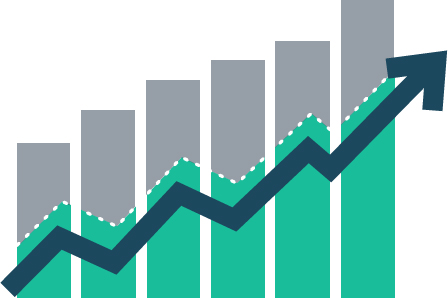Will the Fed Get Inflation Under Control?
The latest rate hike led to the worst selloff since 2020, but we believe the Fed’s policy will help keep growth in balance. At the last policy meeting, the Fed hiked its policy rate by 50 basis points (bps) – the largest increase since 2000 – and laid out plans to start reducing its massive balance sheet. The real “new” news came when Federal Reserve Chairman Jerome Powell took the microphone at the press conference and delivered a double-edged sword.
While Powell seemed to rule out a mega 75 bps hike, suggesting that the Fed might not be as aggressive as markets were chalking it up to be, investors were quick to refocus on the fact that a handful of more hikes (“a couple” of them likely 50 bps) are still on the table to get inflation and labor tensions under control (stoking already elevated recession fears and catalyzing the selloff).

Investment Takeaways
Moving forward, the key is to focus on quality, both in stocks and bonds. As the cycle matures, we are focused on protecting gains while adding ballast to portfolios that could protect against higher volatility. The selloff may present a compelling entry point to embrace both stocks and bonds – but quality is essential. There are several actions investors should consider.
• Now looks like the time to add to core fixed income. Rates have already risen a lot, and the negative economic feedback loop from higher rates limits their room to move higher from here. Sure, rates could still float upward –but even if 10-year Treasury yields climb to the realm of 3.5%, our analysis suggests that core fixed income would be just roughly flat to down 1%. Remember: As bond yields move higher, prices move lower.
• Get more defensive and monetize volatility in stocks. For the first time in years, we don’t think we’re paying a premium for equities. Equity valuations have compressed meaningfully and are back in line with longer-term averages. Given expectations of slowing growth ahead, we are particularly constructive on quality companies with strong balance sheets and high-quality earnings. And with volatility as high as it is, some investors might also find it beneficial to use strategies that can take advantage of these swings as well as add protection.
• Above all, stay invested. The best days and the worst days tend to cluster together. Over the last 20 years, seven of the 10 best days occurred within just over two weeks of the 10 worst days. It may feel tempting to hit “sell” after a bad day, but missing out on the potential best days that may follow and the opportunity to recoup losses can dramatically impact longer-term returns.
Rick Barragan is the Managing Director, Los Angeles Market Manager, for J.P. Morgan Private Bank.
[email protected] | (310) 860-3658
privatebank.jpmorgan.com/los-angeles

